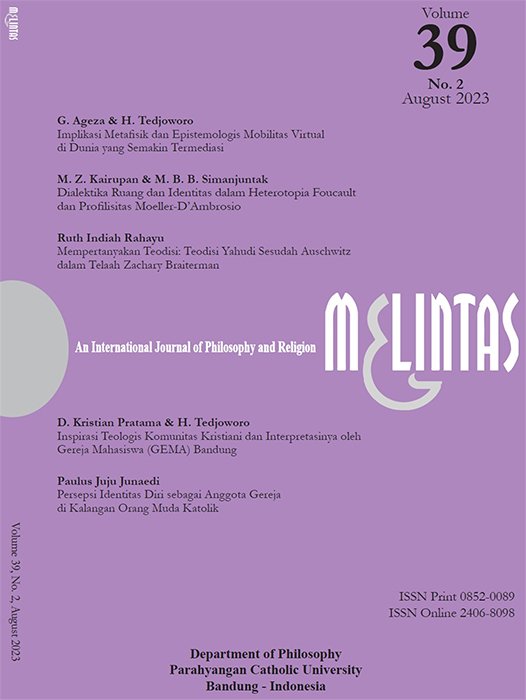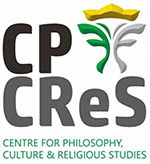Vol. 39 No. 2 (2023)

Self-perception is in the image. Conversing about the breadth or the narrowness of self-perception and the perception of a community will go beyond mere formulations. There are times when we have to ask other people what they see in us. Others are always able to provide a more honest image of ourselves. Self-perception, therefore, is not seen in a mirror, but is ‘heard’ from the impressions of others. In the past, perception was often valued lower than interpretation. Now that assessment is questionable.
Let us try to capture other people's views. Their perceptions are our perceptions, whether we like them or not. We never capture our own images honestly, therefore we learn to capture others’ views of us. This edition of Melintas sees what others see in us. The first article elaborates the metaphysical and epistemological implications of virtual mobility in a world increasingly mediated by ‘screens’, which give rise to several different perspectives that question the Carthusian and dualistic conceptual framework of reality. Perhaps it is not the literal or symbolic screen that must be reinterpreted, but the human perspective itself. The second article sees the interplay between space and the construction of identity and elucidates the elements and aspects of both space and identity. It draws upon Michel Foucault’s concept of heterotopia for the understanding of space and the theory of profile formulated by Hans-Georg Moeller and Paul J. D’Ambrosio. The third article discusses how contemporary Jewish theologians, rabbis, and philosophers have revisited their theodicy by critically reading scriptural texts and traditions. It sees the problem of Jewish theodicy after Auschwitz as studied by Zachary Braiterman by explaining the split between the hegemony of Jewish theodicy with a religious discourse and anti-theodicy with a pagan discourse. The fourth article traces the development of ideas about Christian community in the Scriptures, in the views of the Church fathers, theologians, and in the Church documents. The theological inspirations are correlated with the interpretations of the moderator priests of Student Church (Gema) and with the experiences of the Catholic students in the city of Bandung. The fifth article explores the self-perception of young Catholics as members of the Catholic Church amidst the diversity of the ecclesiastical communities. The author observes the ways of carrying out the Catholic learning by conducting a research among the young Catholics in Bandung concerning their perceptions of being members of the Catholic Church.
Self-perception, more than just a subjective view, is a treasure that we obtain from the views of other people. Thinkers may create their own theories regarding the self-image or the image of a community, but we will find a more honest image as long as we still relate and listen to others.
Editor.

